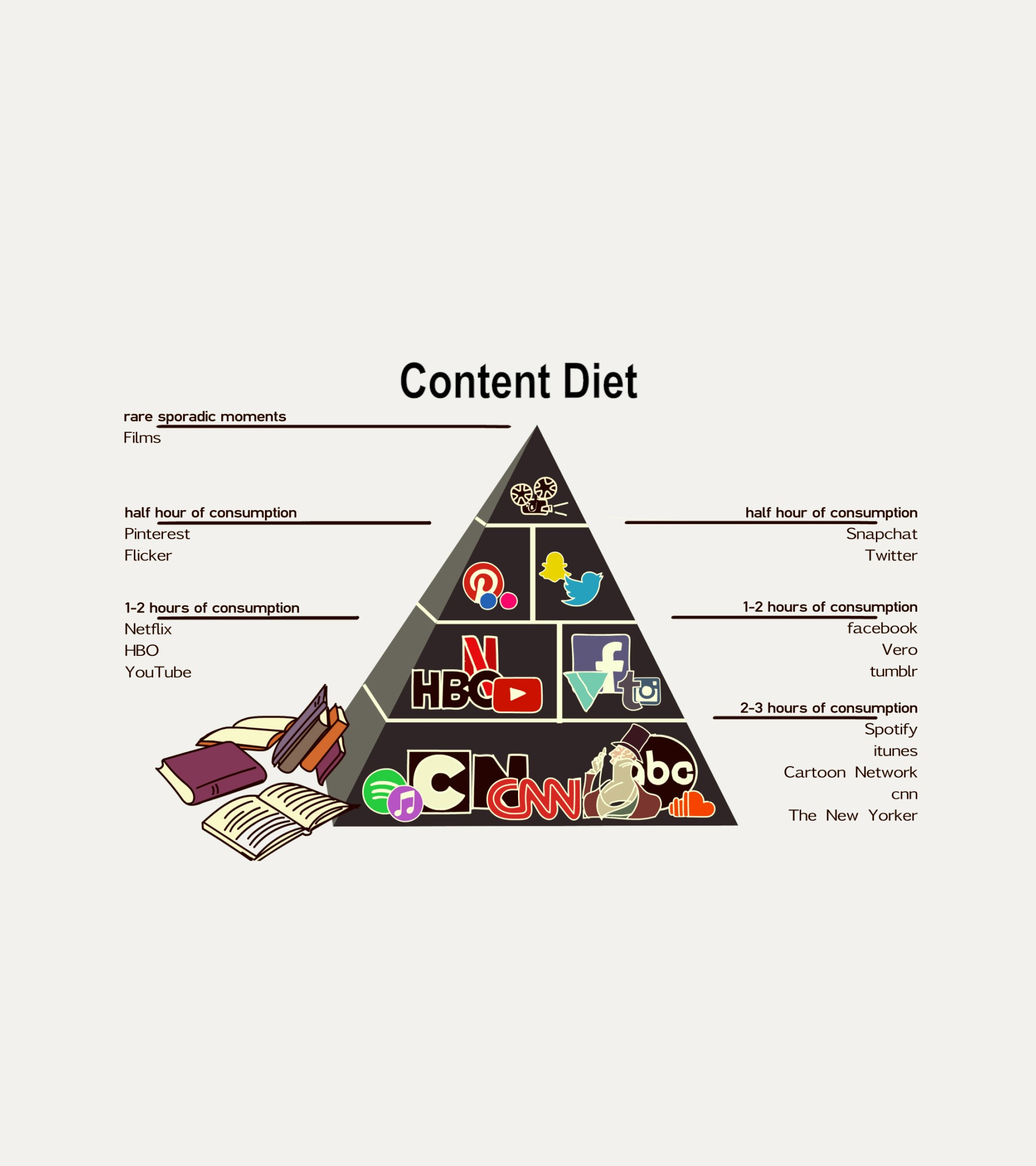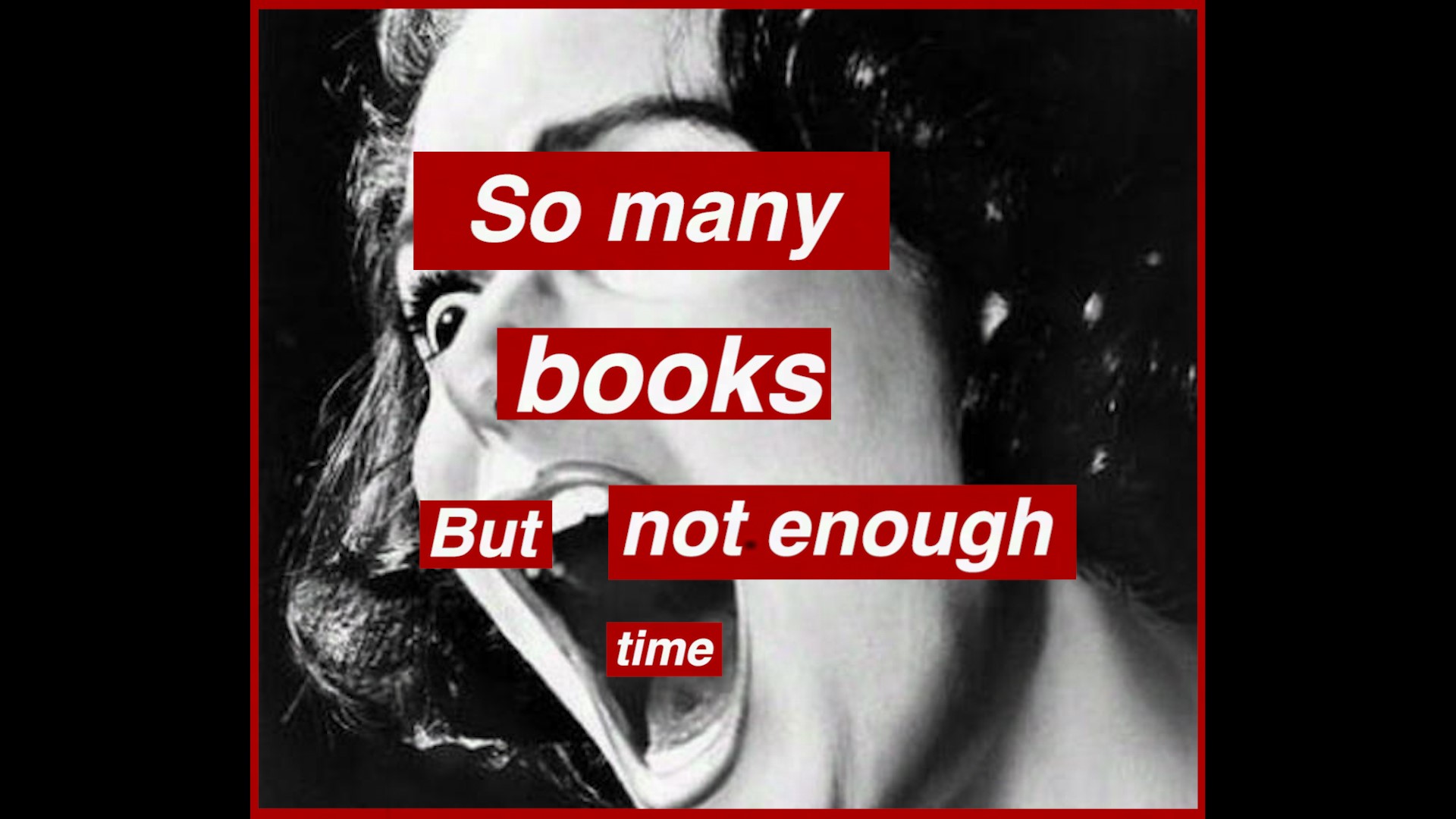I have always loved bookstores. Their aesthetic density — letters, words and provocative illustrations packed closely together—a colorful chaos from floor to ceiling, yet neatly ordered with clean right angles. And the smell, the smell! From the jump, entering a bookstore was a sensation overload both visually and olfactoriaely — and then when you added the books to the equation — with their intriguing titles, authors to explore, and grand ideas that changed the world — it was just about enough to make my head explode.
But recently, the experience of going to the bookstore became tainted by another overwhelming sensation — anxiety. How would I read all these books? How could I even think about buying a new one with all the others I’ve bought and haven’t read just sitting on a shelf?! To make matters worse, I’m a slow reader. Painfully slow. I came to reading late and have always needed to concentrate extra hard, often re-reading paragraphs and pages in order to digest them properly. For this reason bookstores made me become acutely aware of my mortality as I was forced to contemplate the amount of time I have left on this planet and the number of books I’d be able to get through in that time. Knowing I had such limited bandwidth, how would I decide which books to read?! This is what walking into a bookstore stirs up in me. The feeling can best be described as aesthetic pleasure spiked with painful, existential FOMO (fear of missing out). So many books and not enough time.
This sweet and sour bookstore experience hasn’t gone away. In fact, it’s gotten worse — with work, emails, texts, instagram, twitter, Netflix, podcasts and the 24 hour news cycle, the time I have left over to read for pleasure has embarrassingly diminished, so much so that it took me two years to read one book! I was an English Lit major for chrissake! This was profound. I had hit rock-bottom. Even stepping foot in a bookstore became a head-on collision with my guilt over not reading. My content diet was out of whack. I was gorging myself with so many hors-d’oeuvre-sized pieces of content and, for the main course, only consuming TV shows and films. Books had somehow fallen off my plate. And I knew I couldn’t be the only one.

In this golden age of content where we have every kind of media imaginable at our finger-tips 24/7, how do we find our way through the maelstrom? Navigating this ocean of content or, rather, balancing one’s content diet has become a crucial life skill that I clearly didn’t have. So I did what I do when I want to understand something better — I made a film about it. A film that started with one simple question:
How can I balance my content diet in order to read more books?
In attempting to answer this question I decided to explore a few different paths. I needed to:
- Put my whole content diet in perspective — how much time was I spending on social media vs. ingesting news vs. watching TV/movies?
- Figure out which types of content-consumption I could dial down in order to make more room for reading.
- Figure out how to read faster. This has been a lifelong goal of mine — it was finally time to bite the bullet and figure it out.
- Lastly — and arguably unnecessarily — visit the most beautiful bookstores in the world and make love to them with my camera, getting all the right angles in order to yield some serious bookstore porn. Apologies if this too graphic. But graphic is exactly what this otherwise heady exploration needed. Like the search for the fountain of youth, or the lost arc, my search for “bookstore peace” would be a wild adventure to the ends of the earth and back.
The crazy thing is that I did actually discover something. A few things actually, that have since changed my content consuming behavior and made my life richer with the presence of more books. To truly grasp these discoveries you really should watch the film and go on the journey with me. But, if you want to skip right to the pearls of wisdom, we can do that too.

As part of the film I visit with legendary educator Dr. Ruth J. Simmons who, among many other academic and civic achievements, was the first black woman to head an Ivy League university when she became president of Brown in 2001. What’s perhaps even more impressive is that Dr. Simmons is a world-renowned scholar in Comparative Literature and teaches classes on the subject to this day. It shouldn’t be surprising then, that it was her who really said something that crystalized everything for me. What she basically said was — and I’m paraphrasing: in our current moment where everyone is running around scatterbrained, reading a book becomes forced meditation. Forced meditation. I started this project so eager to up my reading speed in order to consume more books (and thereby soothe my anxiety). My perspective was entirely content-based — the more books I consume, the better. But what Dr. Simmons was saying is that the act of reading, in and of itself, is an antidote to the anxiety that comes with making our way through the avalanche of content. It’s not so much about the quantity of books you read, but the quality of your reading — taking the time to really invest in a character, seeing the world the author has created, immersing yourself in the language, and doing so regularly over weeks or months — this is what leads you to a deeper part of your mind — far away from the bustle and noise of the surface. It is here, in this space, where you can reflect deeply.
This is the power of books — to provide a ladder for us to climb above the clouds to a higher perch, where we can gain greater perspective.
Now, there are a lot of cliches that might apply here — quality not quantity or consistency is king or depth over speed — but reading as “forced meditation” landed for me and connected to all the other wisdom I had gleaned throughout my journey — a bookstore in Lisbon called “Ler Devagar” which translates to “Read Slowly”; a speed-reading guru saying that he prefers to slow-down when he reads Harry Potter because otherwise “it’s like going by the Mona Lisa on a skateboard”; the fact that every bookstore you go to makes you want to sit down in a corner with a book and stay there all day reading. There is an undeniable slowing down that comes with reading and bookstores, and for good reason. The slowness and stillness that books and bookstores inspire is a prerequisite to entering a meditative state. It’s no wonder then, that some of the most amazing bookstores in the world are in old churches.
In this schema, bookstores become holy ground, a gateway to your higher self.
I don’t know if I have found everlasting bookstore peace, but reconfiguring my perspective of reading as an immersive mediation as opposed to just another form of content consumption has helped me change my reading habits radically. Reading at least 30 minutes a day and setting aside a few hours on weekends to get really engrossed in a book has not only allowed me to read more (my numbers of books-per-year is way up, thank you very much) but it has also significantly improved my quality of life. Reading in the morning before looking at my phone grounds me and helps me be less reactive throughout the day. And it’s not just me. Almost everyone has had the experience of being so immersed in a book that hours fly by — your mind in a state of flow — only to emerge with an overwhelming sense of peace and contentment. In fact, there’s hard science behind books as forced meditation. In a recent post by Ryan Holiday called “Why Everyone Should Watch Less News” he cites a study by the University of Sussex that found that “six minutes reading a book can reduce stress levels up to 68%.”
The noise of daily life and the amount of content available at our fingertips will only increase. It is on us to adapt to this new world. Plato said that “books are food for the soul.” Perhaps we should keep that in mind as we all struggle to balance our own content diets.
Follow us here and subscribe here for all the latest news on how you can keep Thriving.
Stay up to date or catch-up on all our podcasts with Arianna Huffington here.

